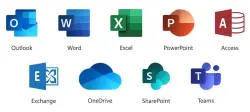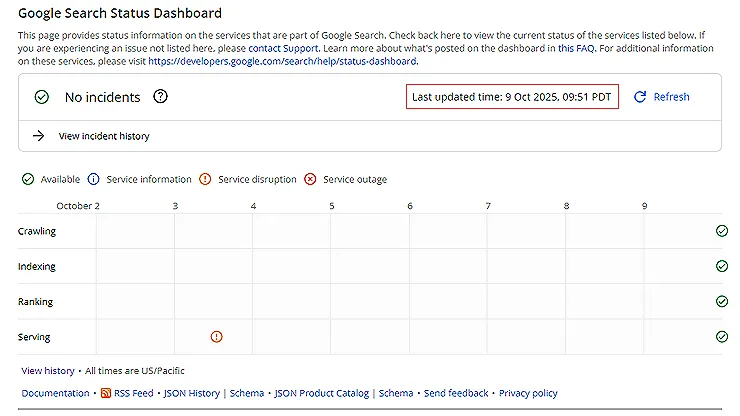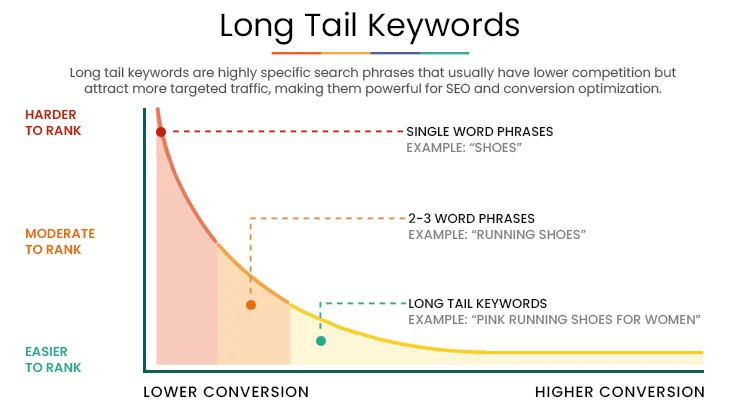Understanding Title Links in Search Results
When users search on Google, title links serve as essential gateways to web pages, providing critical insights that can influence click behavior. Imagine scrolling through search results and being immediately drawn to a well-crafted title link that encapsulates the page’s content succinctly. Title links are typically derived from HTML title tags, main headings, and other prominent text elements on the page.
Significance of Title Tags in SEO
Title tags occupy a central role in search engine optimization (SEO). These tags not only hit the sweet spot in drawing users’ attention, but they also significantly impact a website’s visibility on search engines. Here’s why they matter:
- First Impression: Title tags give users their first glimpse of the page content, making them crucial for attracting clicks.
- Relevancy Indicator: They serve as a signal for search engines to determine how relevant a webpage is to a search query.
- Character Count: While title tags can be lengthy, Google typically truncates them for display in search results, encouraging webmasters to be concise. It’s recommended to keep title tags under 60 characters to avoid truncation.
Ultimately, crafting effective title tags is not just about creativity; it’s about adhering to best practices to enhance SEO performance. By following specific guidelines—like avoiding keyword stuffing and boilerplate text—webmasters can optimize their title links to better align with user intent and boost their search rankings.
Creating Effective Title Links in Google Search
Understanding how title links are generated in Google Search can significantly improve your website’s visibility and user engagement. Effective title links not only grab attention but also provide a snapshot of the page’s content, ultimately influencing the decision to click.
Automation of Title Link Generation
Google employs an automated system to generate title links, using various sources from the page as well as external references. The following elements are crucial in this automated process:
- Main Visual Title: The primary title directly displayed on the webpage.
- Heading Elements: Structured properly, heading tags can convey hierarchy and relevance.
- Meta Tags: Tags such as can influence how a title is presented.
- Anchor Text: Text linking back to the page can also inform the title Google generates.
When Google updates content, it may take time for these changes to reflect in search results. If you’ve recently optimized your titles or content, it might take a few days or weeks for Google to recrawl and reprocess the pages.
Factors Considered in Google’s Title Link Creation Process
It’s essential to be proactive in crafting your title tags. Consider the following best practices:
- Ensure a clear, concise, and engaging title.
- Use relevant keywords without succumbing to keyword stuffing.
- Regularly update title tags to reflect any changes in content.
A well-structured title not only assists Google in understanding your page better but also elevates your click-through rate in search results. By focusing on these practices, you can foster a more effective connection between your content and its audience.
Title links are more than just a catchy headline; they serve as critical tools in navigating the digital world, acting as the first point of contact between users and web pages. When users enter queries into Google, the title link serves as a virtual handshake, offering a glimpse of what lies beyond that clickable link. Understanding how to optimize these title links can make a significant difference in attracting visitor traffic.
Understanding Title Links in Search Results
A title link is the title displayed in search results that links directly to a web page. Google’s algorithms use a variety of sources to determine which title link to display, which is why it’s essential to curate this information carefully. Good title links not only inform users about the page’s content but also help search engines index that content correctly.
Significance of Title Tags in SEO
You might wonder why title tags hold such significance in SEO. Here’s a quick breakdown of their importance:
- First Impressions Matter: Title tags are often how potential visitors decide which link to click on.
- SEO Ranking Factor: Search engines like Google consider title tags when determining the relevance of a web page to a user’s query.
- Character Limit: Keeping title tags concise—ideally under 60 characters—helps prevent truncation in search results, making them visually appealing.
By grasping the importance of title links and title tags, website owners can strategically position themselves to capture user interest and drive engagement effectively.
Today it’s not about ‘get the traffic, it’s about ‘get the targeted and relevant traffic.’
Best Practices in Influencing Title Links
Crafting effective title links is crucial for enhancing your website’s visibility in search engine results. A well-structured title link not only attracts clicks but also delivers a clear message about the content of the page.
Importance of Descriptive and Concise Title Text
When creating title text, clarity is key. A descriptive title helps users understand what they can expect when they click on a link. A few quick tips for crafting effective title text include:
- Use Key Phrases: Incorporate essential keywords that reflect the page’s content and are likely to be searched by users.
- Keep it Short: Aim for a length that avoids truncation in search results. Ideally, keep titles under 60 characters.
- Be Specific: Instead of generic titles like “Home” or “Profile,” consider something more descriptive, such as “Home – Explore Our Latest Articles.”
A descriptive title not only engages users but also provides search engines with valuable context about the content.
Avoiding Keyword Stuffing and Boilerplate Text
While including relevant keywords is essential, it’s crucial to avoid keyword stuffing. Overusing the same phrases can make your title appear spammy and unappealing to users. Here are some strategies to consider:
- Engage with Variety: Instead of repeating keywords, find synonyms or related terms that convey the same meaning.
- Customize Each Title: Avoid boilerplate text that doesn’t differentiate between pages. Each title should accurately represent the specific content.
By adhering to these best practices, website owners can enhance their title links, leading to improved click-through rates and overall site performance in search results.
Creating Effective Title Links in Google Search
Crafting effective title links is essential for accomplishing visibility and clarity in Google Search results. Understanding how Google automates the generation of these links can significantly improve a website’s performance.
Automation of Title Link Generation
Google automates the generation of title links based on multiple factors. When a user performs a search, Google scans the webpage, extracting relevant data to display a title link that best represents the content. This automation means that even if webmasters put in their best efforts to create a title, Google might alter it based on its evaluation criteria.
- Data Sources: Google considers title tags, main visual titles, heading elements, and various prominently styled text to facilitate this automation.
- Anchor Text: The text from links leading to the page also contributes to determining the displayed title link.
Consequently, webmasters must ensure their pages are well-structured and rich in relevant content for optimal results.
Factors Considered in Google’s Title Link Creation Process
When assessing how title links are created, Google looks at:
- Page Content: The actual content displayed on the page helps Google align the title to relevant keywords.
- User Engagement: Headings and format play a role, as content that appears more engaging tends to be favored.
- Semantic Relevance: Google’s algorithms also focus on how closely the title corresponds to the search query, improving user satisfaction.
By focusing on these elements, webmasters can better influence the automated process of title link generation, ensuring their pages are favorable to Google’s discerning algorithms and appealing to potential visitors.
Common Issues and Google’s Management
Even with the best practices, various issues can arise when it comes to title links in Google Search results. Understanding these common problems helps webmasters take proactive measures to enhance their titles.
Half-empty |
When part of the title text is missing. For example: <title>| Site Name</title> Google Search looks at information in header elements or other large and prominent text on the page to produce a title link: Product Name | Site Name |
Obsolete |
When the same page is used year-after-year for recurring information, but the For example: <title>2020 admissions criteria – University of Awesome</title> In this example, the page has a large, visible title that says “2021 admissions criteria”, and the Google Search may detect this inconsistency and uses the right date from the visible title on the page in the title link: 2021 admissions criteria – University of Awesome |
Inaccurate |
<title> elements don’t accurately reflect what the page is about.
Google Search tries to determine if the Google Search might modify the title link to better help users if it determines that the page title doesn’t reflect the page content. For example: Stuffed animals – Site Name |
Micro-boilerplate text in | |
When there are repeated boilerplate text in For example, a television website has multiple pages that share the same That produces duplicate
Google Search can detect the season number used in large, prominent title text and insert the season number in the title link:
|
No clear main title |
When there’s more than one large, prominent heading, and it isn’t clear which text is the main title of the page. For example, a page has two or more headings that use the same styling or heading level. If Google Search detects that there are multiple large, prominent headings, it may use the first heading as the text for the title link. Consider ensuring that your main heading is distinctive from other text on a page and stands out as being the most prominent on the page (for example, using a larger font, putting the title text in the first visible |
Mismatch of writing system or language used in |
When the writing system or language of the text in For example, when a page is in written in Hindi, but the title includes text in English or is transliterated into Latin characters. If Google detects a mismatch, it may generate a title link that better matches the primary content. Consider ensuring that the script and language matches what is most prominent on the page. |
Duplication of the site name in the |
| In the case of domain-level site names, Google may omit the site name from the title link, if it’s repetitive with the site name that’s already shown in the search result. |










